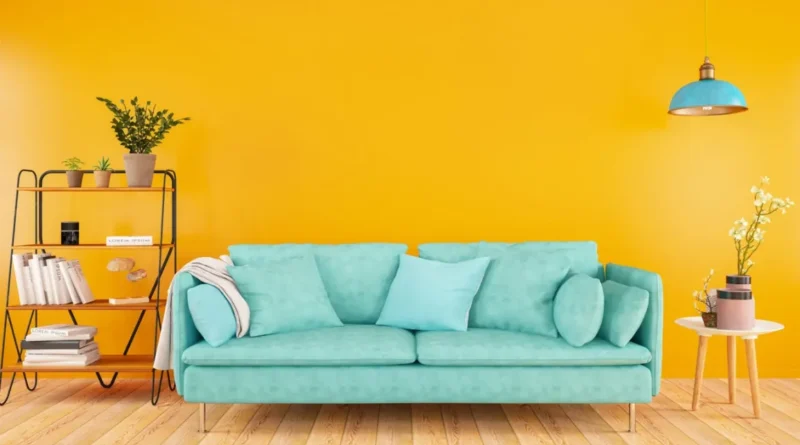Interior as Therapy: How Your Space Can Reduce Stress and Boost Resilience
In a world where stress has become a constant backdrop, the issue of restoring personal energy is more important than ever. Increasingly, experts in psychology, neuroarchitecture, and interior design emphasize the significance of the environments we live and work in. Space is not just a background—it plays an active role in our emotional well-being. A thoughtfully organized interior can serve as therapy: lowering stress levels, restoring energy, improving focus, and enhancing overall quality of life.
In this article, we’ll explore how interior environments influence our psychological state, which elements have a “therapeutic effect,” and how to transform your space into a resourceful sanctuary—without a complete renovation.
Why Your Environment Affects Mental Health
Every element around us influences our emotional state: lighting, scent, texture, color, noise, spatial perception, and visual clarity. These signals are processed subconsciously but provoke real physiological and behavioral responses—from changes in heart rate to levels of anxiety and fatigue.
Examples of how the environment affects the body:
- Clutter and chaos increase irritability and mental overload
- Warm, soft lighting promotes relaxation
- Smooth, natural surfaces reduce stress
- Natural light boosts dopamine and serotonin levels
- Silence or soft sounds aid focus and inner calm
Table: Interior Elements and Their Impact on Emotional Well-being
| Element | Effect on Mental Health | Notes |
|---|---|---|
| Lighting | Reduces anxiety, improves sleep | Natural and diffused light is best |
| Color Scheme | Influences mood and energy levels | Warm tones for coziness, cool for focus |
| Acoustics | Can soothe or irritate | Echo and loud noises trigger stress |
| Scents | Stimulate memory, promote relaxation | Essential oils: lavender, citrus, sandalwood |
| Space Organization | Reduces cognitive load | Order and zoning are foundational |
Interior as a Part of a Healing Environment
Therapeutic interior design is about creating a space tailored to human needs. Such environments help:
- Shift focus from external chaos to internal balance
- Support concentration or promote deep relaxation
- Restore a sense of control and safety
- Reduce sensory overload (visual, auditory)
- Offer aesthetic and tactile satisfaction
This is often called a “resourceful” space. It doesn’t have to be perfect—but it feels like your own: filled with things that bring joy without overwhelming the senses.
Table: Signs of a Resourceful Interior
| Feature | Why It Matters | How to Achieve It |
| Visual Order | Fewer distractions | Hidden storage systems |
| Natural Materials | Calm the nervous system | Wood, cotton, linen, clay |
| Adjustable Lighting | Syncs with natural body rhythms | Multiple light sources |
| Personal Elements | Reinforces identity and comfort | Photos, keepsakes, hobbies |
| Live Plants | Reduce stress, improve air quality | Easy-care types: snake plant, peace lily |
List: Simple Steps to a Therapeutic Interior
- Declutter: remove unused or unjoyful items
- Create zones for different needs: reading, work, rest
- Use dimmers and warm-toned lighting
- Place a few plants in key areas
- Remove visual irritants: aggressive patterns, broken items
- Replace plastic decor with textiles, wood, or glass
- Add textures: wool, cotton, soft rugs, flowing curtains
List: What Hinders Recovery in Your Interior
- Constant visual noise (bright colors, clutter)
- No private or quiet space
- Harsh or overly bright lighting
- Poor-quality materials (squeaky plastic, synthetics)
- Excessive technology and screen exposure
- Lack of a personal connection to the space
Interior as a Reflection of the Inner World
The spaces we inhabit daily shape not only our mood but also our thinking. A home that feels cozy, beautiful, and calming becomes an extension of the self and supports resilience in the face of outside stressors.
Psychologists note that even small changes—like rearranging furniture or switching textiles—can trigger inner transformation. A resourceful interior isn’t about price, but about mindfulness.
Interior design is not just about aesthetics. It’s a tool. When used with intention, it can help us recover, manage our mood, and build an environment that nourishes instead of drains. With thoughtful details, warm light, cleanliness, comfort, and self-compassion, any space can become therapeutic.
A healing interior is not a trend—it’s a necessity. Especially in a world of chronic stress, overstimulation, and digital noise. A mindful approach to space is the first step toward emotional stability and a fulfilling life.
